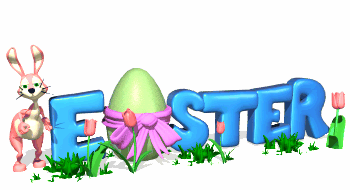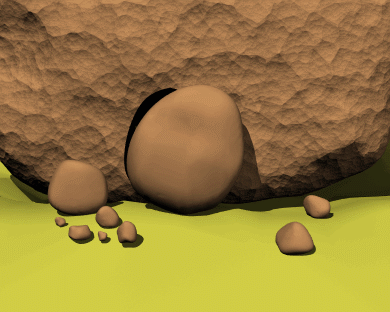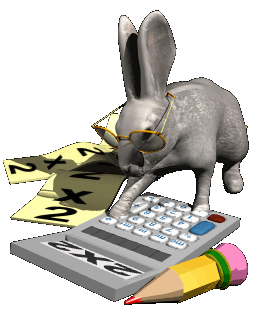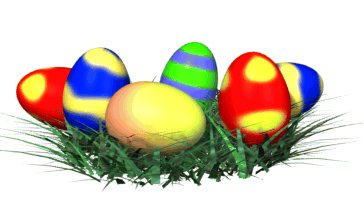The Traditions of Easter Celebration
|
||||||||||
| Printer Friendly Story View |

Happy Easter To Everyone
The Traditions of Easter
As with almost all "Christian" holidays, Easter has been secularized and commercialized. The dichotomous nature of Easter and its symbols, however, is not necessarily a modern fabrication.
Since its conception as a holy celebration in the second century, Easter has had its non-religious side. In fact, Easter, or Eastre, as it was originally called, was in early days a pagan festival.
The ancient Saxons celebrated the return of spring with an uproarious festival commemorating their goddess of offspring and of springtime, Eastre. When the second-century Christian missionaries encountered the tribes of the north with their pagan celebrations, they attempted to convert them to Christianity. They did so, however, in a clandestine manner.
It would have been suicide for the very early Christian converts to celebrate their holy days with observances that did not coincide with celebrations that already existed. To save lives, the missionaries cleverly decided to spread their religious message slowly throughout the populations by allowing them to continue to celebrate pagan feasts, but to do so in a Christian manner.

As it happened, the pagan festival of Eastre occurred at the same time of year as the Christian observance of the Resurrection of Christ. It made sense, therefore, to alter the festival itself, to make it a Christian celebration as converts were slowly won over. The early name, Eastre, was eventually changed to its modern spelling, Easter.
The Date of Easter
Prior to 325 A.D., Easter was variously celebrated on different days of the week, including Friday, Saturday, and Sunday. In that year, Emperor Constantine convened the Council of Nicea.
It issued the Easter Rule, which states that Easter shall be celebrated on the first Sunday that occurs after the first full moon on or after the vernal equinox. However, a caveat must be introduced here. The "full moon" in the rule is the ecclesiastical full moon, which is defined as the fourteenth day of a tabular lunation, where day 1 corresponds to the ecclesiastical New Moon. It does not always occur on the same date as the astronomical full moon. The ecclesiastical "vernal equinox" is always on March 21. Therefore, Easter must be celebrated on a Sunday between the dates of March 22 and April 25.
The Lenten Season
Lent isthe forty-six day period just before Easter Sunday. It begins on Ash Wednesday. Mardi Gras (French for "Fat Tuesday") is a celebration, sometimes called "Carnival," practiced around the world, on the Tuesday before Ash Wednesday.
It was designed as a way to "get it all out" before the sacrifices of Lent began. New Orleans is the focal point of Mardi Gras celebrations in the U.S. Read about the religious meanings of the Lenten Season.
The Cross The Cross is the symbol of the Crucifixion, as opposed to the Resurrection. However, at the Council of Nicea, in A.D. 325, Constantine decreed that the Cross was the official symbol of Christianity. The Cross is not only a symbol of Easter, but it is more widely used, especially by theCatholic Church, as a year-round symbol of their faith.
The Easter Bunny

This Easter Bunny is Multiplying . . .
The Easter Bunny is not a modern invention. The symbol originated with the pagan festival of Eastre. The goddess, Eastre, was worshipped by the Anglo-Saxons through her earthly symbol, the rabbit.
The Germans brought the symbol of the Easter rabbit to America. It was widely ignored by other Christians until shortly after the Civil War. In fact, Easter itself was not widely celebrated in America until after that time.

The Easter Egg
As with the Easter Bunny and the holiday itself, the Easter Egg predates the Christian holiday of Easter. The exchange of eggs in the springtime is a custom that was centuries old when Christians first celebrated Easter.br>
From the earliest times, the egg was a symbol of rebirth in most cultures. Eggs were often wrapped in gold leaf or, if you were a peasant, colored brightly by boiling them with the leaves or petals of certain flowers.
Today, children hunt colored eggs and place them in Easter baskets along with the modern version of real Easter eggs -- those made of plastic or chocolate candy.
| Printer Friendly Story View |
|
|

O. J. Cunningham |
|
|
|
Printer-Friendly Story View
0200 Nd: 04-12-2024 d 4 cpr 0
12/31/2020 P3v3-0200-Ad.cfm
SPONSORED LINKS
12/31/2020 drop ads P3v3-0200-Ad.cfm


